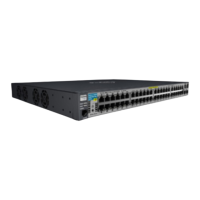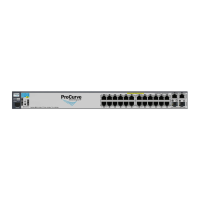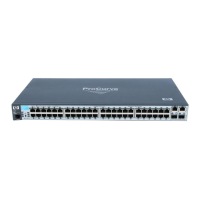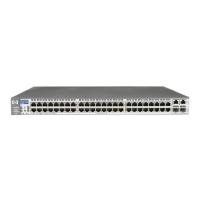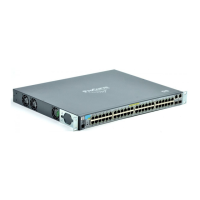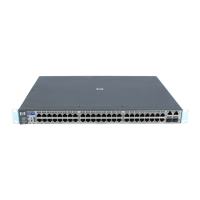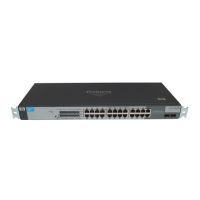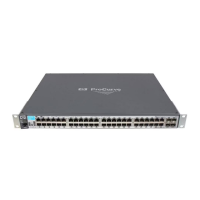IP Routing Features
Configuring DHCP Relay
drop: Configures the routing switch to unconditionally drop any client DHCP
packet received with existing Option 82 field(s). This means that such
packets will not be forwarded. Use this option where access to the routing
switch by untrusted clients is possible.
If the routing switch receives a client DHCP packet without an Option 82
field, it adds an Option 82 field to the client and forwards the packet. The
added Option 82 field includes the switch circuit ID (inbound port
number*) associated with the client DHCP packet, and the switch remote
ID. The default switch remote ID is the MAC address of the switch on
which the packet was received from the client. To use the incoming VLAN’s
IP address instead of the switch MAC address for the remote ID, use the
IP option (below).
keep: For any client DHCP packet received with existing Option 82 field(s),
configures the routing switch to forward the packet as-is, without
replacing or adding to the existing Option 82 field(s).
*For more on identifying the inbound port number, refer to “Circuit ID” in
the bulleted list on page <zBlue>33.
[ validate ]: This option operates when the routing switch is configured with
append, replace, or drop as a forwarding policy. With validate enabled,
the routing switch applies stricter rules to an incoming Option 82 server
response to determine whether to forward or drop the response. For more
information, refer to “Validation of Server Response Packets” on page 7-
36.
[ ip | mac ]
This option specifies the remote ID suboption the routing switch will use in
Option 82 fields added or appended to DHCP client packets. The choice of type
depends on how you want to define DHCP policy areas in the client requests
sent to the DHCP server. (Refer to “Option 82 Field Content” on page 7-32.)
ip: Specifies the IP address of the VLAN on which the client DHCP packet enters
the switch.
mac: Specifies the routing switch’s MAC address. (The MAC address used is
the same MAC address that is assigned to all VLANs configured on the
routing switch.) This is the default setting.
Notes on Default Remote ID Selection: Executing the Option 82 command
without specifying either ip or mac configures the remote ID as the MAC
address of the switch on which the packet was received from the client. The
command options for viewing the routing switch MAC address are listed at
the end of the “Remote ID” description that begins on page <zBlue>32.
7-39
